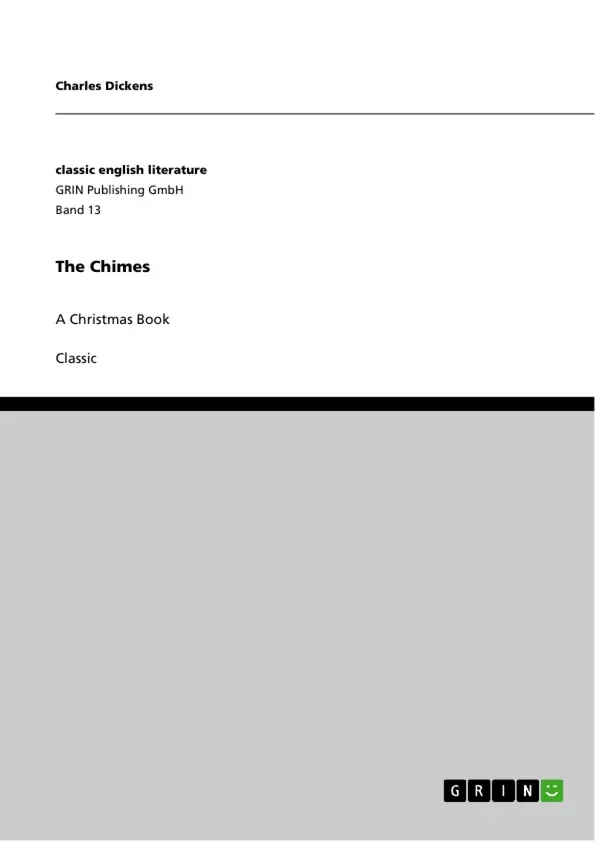First published in 1844 ... Here are not many people—and as it is desirable that a story–teller and a story–reader should establish a mutual understanding as soon as possible, I beg it to be noticed that I confine this observation neither to young people nor to little people, but extend it to all conditions of people: little and big, young and old: yet growing up, or already growing down again—there are not, I say, many people who would care to sleep in a church. I don’t mean at sermon–time in warm weather (when the thing has actually been done, once or twice), but in the night, and alone. A great multitude of persons will be violently astonished, I know, by this position, in the broad bold Day. But it applies to Night. It must be argued by night, and I will undertake to maintain it successfully on any gusty winter’s night appointed for the purpose, with any one opponent chosen from the rest, who will meet me singly in an old churchyard, before an old church–door; and will previously empower me to lock him in, if needful to his satisfaction, until morning.
For the night–wind has a dismal trick of wandering round and round a building of that sort, and moaning as it goes; and of trying, with its unseen hand, the windows and the doors; and seeking out some crevices by which to enter. And when it has got in; as one not finding what it seeks, whatever that may be, it wails and howls to issue forth again: and not content with stalking through the aisles, and gliding round and round the pillars, and tempting the deep organ, soars up to the roof, and strives to rend the rafters: then flings itself despairingly upon the stones below, and passes, muttering, into the vaults. Anon, it comes up stealthily, and creeps along the walls, seeming to read, in whispers, the Inscriptions sacred to the Dead. At some of these, it breaks out shrilly, as with laughter; and at others, moans and cries as if it were lamenting. It has a ghostly sound too, lingering within the altar; where it seems to chaunt, in its wild way, of Wrong and Murder done, and false Gods worshipped, in defiance of the Tables of the Law, which look so fair and smooth, but are so flawed and broken. Ugh! Heaven preserve us, sitting snugly round the fire! It has an awful voice, that wind at Midnight, singing in a church!
Inhaltsverzeichnis (Table of Contents)
- Chapter 1: First Quarter
Zielsetzung und Themenschwerpunkte (Objectives and Key Themes)
The objective of this preview is to provide a comprehensive overview of the early chapters of Charles Dickens' *The Chimes*, focusing on key themes and narrative elements without revealing major plot points or the conclusion. It aims to offer potential readers a taste of the style and atmosphere of the work.
- The personification of the wind and its symbolic significance.
- The characterization of Toby Veck and his relationship with his environment.
- The setting and atmosphere of the old church and its steeple.
- The description of the chimes and their sounds.
- The juxtaposition of the harsh reality of poverty with the symbolic power of the chimes.
Zusammenfassung der Kapitel (Chapter Summaries)
Chapter 1: First Quarter: This chapter introduces the setting of an old church and the character of Toby Veck, a ticket-porter who waits for work outside the church door. It vividly describes the harshness of the winter weather and the sounds of the wind howling around the church, particularly within the steeple where the Chimes reside. The chapter focuses on the sounds and atmosphere of the church and the effects of the weather on Toby Veck, emphasizing the contrasting elements between nature's harshness and the sounds of the chimes.
Schlüsselwörter (Keywords)
The key words and focus topics of this work include: weather, sound, atmosphere, personification, poverty, London, chimes, Toby Veck, church, winter.
- Quote paper
- Charles Dickens (Author), 2008, The Chimes, Munich, GRIN Verlag, https://www.hausarbeiten.de/document/119660


